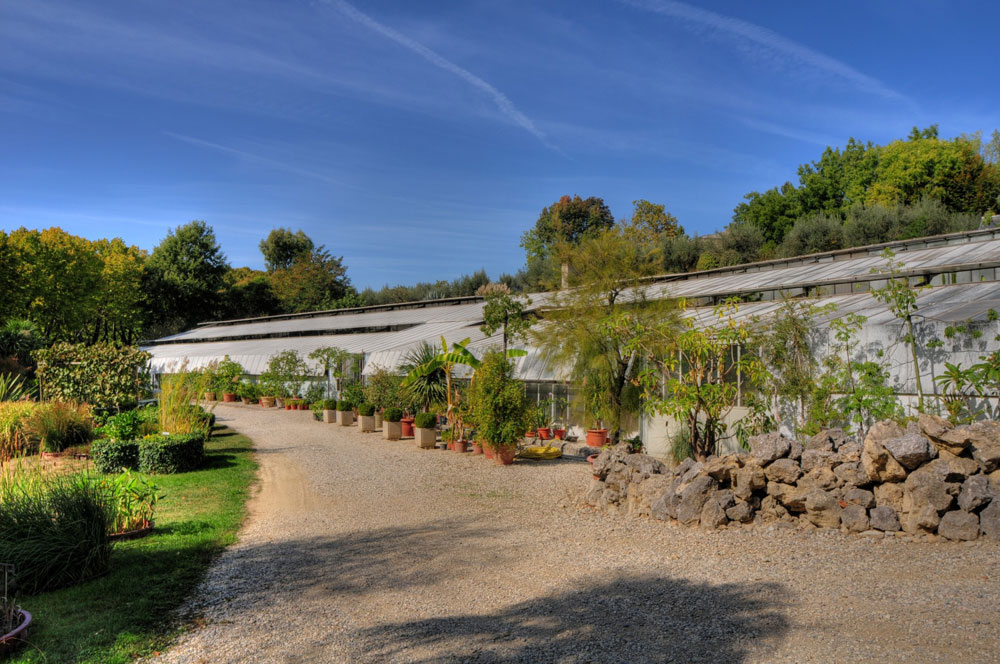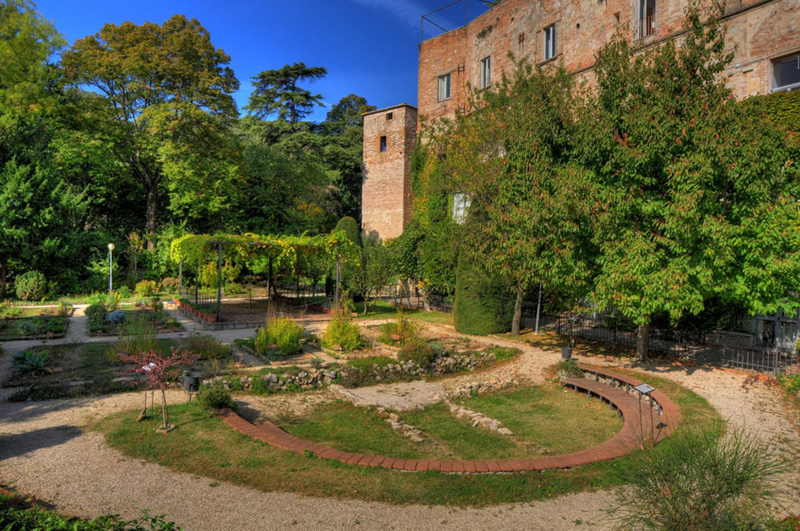
Perugia Botanical Garden
This post is also available in:
 Italiano (Italian)
Italiano (Italian)
The botanical garden of Perugia consists of two areas, both located on via Borgo XX Giugno 74 (on the land next to the Church of S. Costanzo, between via San Costanzo and via Romana). They’re the “Orto Medievale” (“Medieval Garden”) and the “Orto Botanico” (“Botanical Garden”).
In 1813, Domenico Bruschi, in charge of the chair of Botany and Agriculture, created a university botanical garden next to the faculty of agriculture (the third after the first two, founded respectively in 1720 and 1799, but later lost).
In 1896, this green facility was moved to its current location in San Pietro district. In 1962, an experimental plot next to the Faculty of Agriculture was, in turn, transformed into a botanical garden in order to expand its collections and offer the required support to the instructional and scientific programs carried out by the University. In 1996, on the occasion of the centenary of the faculty, the old internal garden was turned into a “Medieval” one, evoking the seamless unity with the Abbey it used to be part of.
Today, both the “Botanical Garden” and the “Medieval Garden” are part of the University Centre for Scientific Museums (C.A.M.S.), managed by the very University of Perugia.
In total, the “Botanical Garden” and the “Medieval Garden” include about 1200 taxa belonging to the local flora and to that of other Italian regions, as well as several exotic plants of systematic or economic interest.
In the “Medieval Garden”, there are gigantic and centuries-old trees, as well as many species cultivated in the middle-ages. The structure and the very location of the cultivated taxa evoke medieval botanical beliefs and mythology.
The visitors’ path begins with a symbolic representation of the garden of eden, followed by a sacred wood and eventually reaching the Hortus sanitatis and the Hortus holerorum, where medicinal and food plants are grown.
The “Botanical Garden”, on the other hand, hosts about 3000 species from different Italian areas, and includes an Alpine Garden, a Zen Garden, and a pond with shade-loving plants (species which have adapted to specific and different environments).
The collections are mostly arranged according to phylogenetic criteria.
BOTANICAL SPECIES
Apennine arboretum:
typical taxa of the central Apennines and belonging to the Quercus, Castanea, Fagus, Populus, Salix spp. genera are cultivated here.
In the undergrowth, there are several spontaneous herbaceous plants, including some taxa belonging to the Orchidaceae family.
Aquatic plants:
they include exotic species such as Eichhornia speciosa, Pistia stratootes, Nelumbium speciosum, Pontederia cordata and native species, such as those threatened of extinction in Umbria (Isoetes histrix, Trapa natans, Menyanthes trifoliata, Nymphaea alba, Salvinia natans, Equisetum hyemale, Nymphoides peltata and Dryopteris thelypteris).
Tropical and subtropical plants:
many potted specimens are kept in the cold greenhouse during the winter period, including Cinnamomum camphora, and Brachychiton populneum R. There are also
several species of the Bombacaceae family, such as Adansonia digitata and Chorisia speciosa, tree ferns (Alsophila cooperi and Dicksonia antarctica), and commercial plants (Cananga odorata and Theobroma cacao).
Succulent xerophytes:
in the cold greenhouse, there are Euphorbia canariensis, Euphorbia virosa, and Euphorbia damarana ( Euphorbiaceae family), Bowiea volubilis (Hyacinthaceae family), Pachypodium lamerei (Apocynaceae family), Xerosicyos perrieri (Cucurbitaceae family), Didierea procera (Didiereaceae family), Dracaena cinnabari and Dracaena draco (Dracaenaceae family).
Other genera include Aeonium, Cotyledon, Crassula, Kalanchoe, Sedum, and Sempervivum (Crassulaceae family), as well as Cereus, Echinocactus, Mammillaria (Cactaceae) family.
Gymnospermae:
there are numerous specimens grown in the open ground belonging to the Abies, Cedrus, Pinus, Juniperus, Larix, Picea, Taxodium, Metasequoia, and Sequoiadendron genera. Some more delicate specimens are kept in the cold greenhouse, such as Podocarpus macrophylla, Araucaria excelsa, Araucaria imbricata, and Torreya nucifera.
Other collections:
a rose garden, which tells the history of cultivation of the Rosa genus, a collection of forty species and cultivars of the Hydrangea genus, and a collection of cultivars of Pelargonium with fragrant leaves.
This post is also available in:
 Italiano (Italian)
Italiano (Italian)
Contatti
Via Borgo XX Giugno 74 - Perugia(PG)
075 32643
ortobot@unipg.it
http://www.ortobotanicoitalia.it/umbria/perugia/
Altre info
Gratuito
Tutti i giorni feriali
Dalle 8.00 alle 18.30




